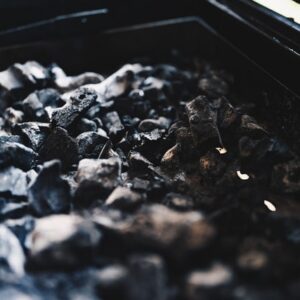Lightning Rod for House or Lightning Protection for home is a best and interesting topic or concept. So, in this article we discussed this topic named Lightning Rod for House. First of all we are talking about the Lightning Rod for Home and after that how we can install lightning rod or protection in our home.
You must have come across lightning rod for house in several locations. But have you ever wondered, how they work to protect building the working of a lightning rod system is not just interesting. But they are equally important considering that your life and property are at stake when it comes to lightning strikes.
Did you know, the empire state building is struck by lightning 100 times a year on an average and yet it stands tall courtesy an efficient lightning protection system work. When lightning strikes a building.
![Lightning Rod For House | Electrical Protection &Installation [Updated] 1 ligning rods](https://wirekhoj.com/wp-content/uploads/2022/01/lightning-rods-1024x683.jpg)
It resorts to any conductor available inside the building to make its way to the ground.
In most cases this is facilitated by electrical or cable lines at times. However the house itself can act as a conductor when lightning passes through these lines.
It can damage electrical protection appliances and may even cause fire and destroy the building. If we take into account the threat lightning poses to human life and the fact that we can’t prevent it, our bet is to avoid it.
The easiest way of avoiding it is to guide it to the ground by a designated path. Such that it bypasses the building without harming it. Now that’s where a lightning rod system comes handy: it intercepts lightning and sends it to the ground using conductive material.
Table of Content
What is a Lightning Rod For a House?
An Electrical Lightning Rod for house or electrical protection conductor is a metal rod or conductor that is attached to the top of a building and to the ground by an electric wire to protect the building in the event of lightning.
Whenever lightning strikes the building, it strikes the rod and instead of passing through the building, it is carried through the wire to the ground where it can start fire or cause electrocution.
A lightning rod is a single component in a lightning protection system. An electric rod is a pointed metal rod attached to the roof of a building. The rod may be one inch 2 cm in diameter. It connects to a huge piece of copper or aluminum wire which is an inch or so in diameter.
The wire is connected to a Conductive Grid buried in the ground nearby. The purpose of a lightning rod is often misunderstood. Many people believe that lightning sticks attract lightning but it is a measure of safety in case of lightning. The relevance of a lightning rod is not only when the strike occurs or occurs immediately after the strike, regardless of whether the lightning rod is present or not, the strike will still occur.
Discovery of Lightning Rod For Homes
The lightning rod was invented by Benjamin Franklin in 1752. Electric sticks have existed in ancient times as evident in 205 km in the state of Anuradhapura in Sri Lanka. North of Colombo which is thousands of years old. Sinhalese kings who had mastered the construction of stupas and advanced building structures put a metal head made of copper at the highest point of each building to conduct any electric charge.
Electrical protection conductors can be used in the Nevyansk Tower where the roof of the tower is clad in the shape of a gold sphere with a spike with a metal rod.
Although the real purpose and intention behind the metal roof is unknown. As there is no record of who invented this lightning rod, the credit is given to Benjamin Franklin who conducted experiments in this field.
During 1746 Franklin, an American scientist and inventor first stumbled upon other scientific electrical protection experiments in Boston, Massachusetts. He became interested in knowing more about electricity. In 1749 Benjamin Franklin invented the lightning rod. He was also known as Lightning Attractor or Franklin Rod. His invention was the result of his investigation of electricity.
By 1750, in addition to proving that there was electricity, Franklin began to think about protecting people’s buildings and other structures from electricity.
At that time he had observed that a sharp iron needle would conduct electricity away from the region of the charged metal. He first theorized that lightning could be stopped by using a high iron rod attached to the earth to clear static from a cloud.
This increased his idea for the lightning rod. Franklin described an iron rod about 8 or 10 feet long that was sharpened to a point at the end. In June of 1752, Franklin was in Philadelphia waiting for Steeple to be completed for his use as the lightning rod on top of Christ Church.
He became impatient and decided that Kite would be able to get even closer to Storm’s Clouds. Ben needed to figure out what he would use to attract an electric charge fixed to a metal key and attach it to the kite. Then he tied the kite string to the knuckles of his hand with an Insulating Silk Ribbon.
At the first sign of the key receiving an electrical charge from the air, Franklin knew there was a form of electricity. Franklin began advocating for lightning rods that had sharp points because they conducted electricity better than a blunt one. Václav Prokop Devís Czech priest theologian and natural scientist also invented a lightning rod independently of Benjamin Franklin’s invention between 1750 and 1754.
Addition Read : House Wiring Material List
Future of Lightning Rod
Nikola Tesla’s U.S. Patent 1,266,175 was an improvement in lightning protectors. The patent was granted because of a flaw in Franklin’s original principle. The pointed lightning rod actually ionizes the air around itself rendering the air conductive which in turn increases the chance of a strike.
Electrical protection conductors should have been lowered on ships earlier when lightning was predicted and the success rate was low. In 1820 William Snow Harris invented a successful system for electrically fitting the wooden sailing ships of the day.
But despite successful trials beginning in 1830, the British Royal Navy did not adopt the system until 1842. By that time the Imperial Russian Navy had already adopted the system.
The power points were basically replaced in the 1990s when the Statue of Liberty was restored to the Capital Building of the United States in Washington DC. The statue was designed with several devices that are glued with platinum.
The Washington Monument was also furnished by several lightning points and the Statue of Liberty in New York Harbor is struck by lightning which is pulled out.
A lightning protection system was developed to protect the buildings. This typically includes a roofing network of conductors, several conductive paths from the roof to the ground with metal objects within the structure and a grounding network. A roof lightning rod is a metal bar or rod that is usually made of copper or aluminum.
Lightning protection systems are installed on structures, trees, monuments, bridges or ships of water to protect them from lightning damage. The individual lightning rod for house is sometimes called a Phenyl Air Terminal or Strike Termination Device. These rods can be placed at regular intervals on the highest parts of a structure.
Lightning protection for the aircraft is provided by the mounting devices on the aircraft structure. Patrons are provided with expansion through the structure of the outer surface of the plane and within a static discharge.
Lightning protection installation on a watercraft includes a lightning protector mounted on top of the mast or superstructure and a Grounding Conductor in contact with the water. Electrical conductors connect to the protector and run under the conductor
Additional Read : Electrical Pole
The Grounding Conductor for a vessel with an iron or steel hull is the Rudder. For a vessel with a non-conducting rudder the grounding conductor may be part of a retractable rudder or may be attached to a centreboard.
Who can Install the lightning Rod for House?,
This is the most common question that is asked by the many of the google users on google. If you want to save your home with the sky lightning or protection by the sky lightning then you absolutely use this device at top of your home.
If your home is very large then absolutely, you have to use this phenomena at your home. It helps you house by the lightning in the sky lightning. This lightning rod for the house you can purchase from the different types of the ecommerce website which is premade and you just have to install these gadgets at your home.
How to Install a Lightning Rod for a House?
As we know that Lightning rod for house is also said by another name as Lightning areaster. If you want to install this electrical areaster then follow the some steps that i mention in this section:
First of all you have to search the highest or top roof of our home. It is appropriate to place it where the highest wall of the ceiling is.
Now take the marking or footprint of the Lightning rod for house and after that make the hole by using the drill in the gap of the electrical lightning Rod for House. House it saves our house by the sky lightning.
When our house is under the contact of the rain then the resistance of the wall decreases. So at that time it helps to absorb the sky lighting. After that our house will be protected by the sky lightning.
Additional Read : Top 20 Electrical Tools
After that attach the PVC areastar in those holes that we made some time before. Because our lightning rod for the house is not attached to the earth. Fix the areastar by using the screw.
Now we can make the connection by using the wires. You can use 6mm wire to make the connection. Attach these two wires with the lightning rod for the house. Make the connection light. And attach the insulator with it.
Now attach the second pair or mouth of the copper wires with the earthing pit. After that your connection is appropriate.
Conclusion
So, guys, we cover the following things in the lightning rod for the house. Also we cover the discovery, future and installation process of the lightning rod for the house. So, I hope you like this article. If you like this article then please share this article with your friends and relatives.
If you have any doubts or query related to this article then please comment below. We try to shout out your queries as soon as possible.
Note: This blog post is usually written only for the purpose of giving the information about the electric rod or lightning rod with research. This blog post is not licensed by the electrician expert. So, before installation please help the expert or any higher rank electrician.

![Lightning Rod For House | Electrical Protection &Installation [Updated] 2 kaitlan balsam NCCuOx7H dE unsplash 1 |](https://wirekhoj.com/wp-content/uploads/2022/01/kaitlan-balsam-NCCuOx7H-dE-unsplash-1.jpg)
![[Best Method] Copper Plate Earthing Diagram & Price in 2022 5 plate earthing](https://wirekhoj.com/wp-content/uploads/2021/09/greg-rosenke-0OZt4hzVUAY-unsplash-300x300.jpg)

